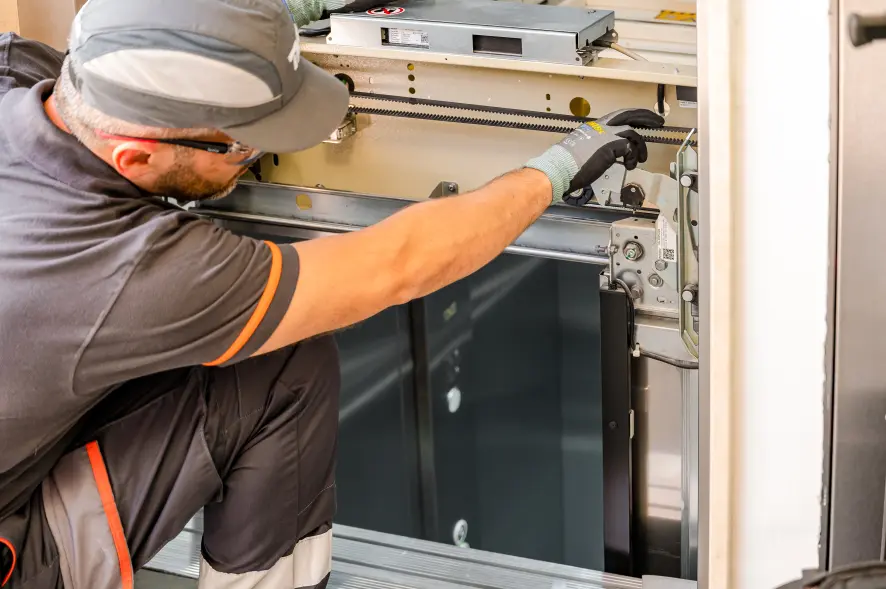Necessary Overview to Comprehending Handicapped System Lifts and Their Capability
Recognizing the ins and outs of handicapped platform lifts goes past simple awareness; it requires a comprehensive understanding of their capability and design. The stringent safety and security regulations and maintenance factors to consider associated with system lifts are paramount in guaranteeing their dependability and long life - lift service companies.
Kinds Of Disabled System Lifts
There are a number of types of disabled platform raises created to give access for people with movement difficulties. Inclined platform lifts, on the various other hand, are appropriate for places where a vertical lift might not be viable due to building restrictions.
Another kind of handicapped system lift is the portable lift, which provides versatility and comfort. These lifts can be quickly relocated from one location to another, making them excellent for momentary occasions or situations where a permanent installment is not feasible. In addition, outdoor system lifts are designed to hold up against varying climate condition, permitting people to access outdoor areas easily and independence. Each sort of impaired platform lift serves an one-of-a-kind purpose in improving availability and enhancing the lifestyle for people with mobility obstacles.
Key Parts and Systems
Impaired system lifts, such as vertical and likely lifts, depend on details crucial elements and systems to ensure smooth and secure transport for individuals with flexibility difficulties. One essential element of these lifts is the system itself, which works as the structure for transporting individuals - elevator maintenance. The platform is made to be sturdy, sizable sufficient to suit wheelchairs or wheelchair gadgets, and outfitted with safety and security attributes such as guardrails and non-slip surface areas to avoid accidents during transportation

In addition, safety and security sensors and emergency quit switches are integrated into disabled system lifts to enhance customer safety and protect against accidents. These elements function with each other to develop a trusted and efficient transport remedy for people with wheelchair impairments.
Setup and Upkeep Factors To Consider

Routine maintenance is similarly essential to maintain disabled platform raises running read here efficiently. Arranged examinations, lubrication of moving components, and testing of safety features Visit Website should be carried out according to the producer's recommended timetable. Any indicators of deterioration need to be dealt with without delay to avoid more damage and guarantee the lift operates dependably. Furthermore, having an upkeep log to track service background and interventions can assist in recognizing patterns and potential concerns before they intensify. By prioritizing correct installation and thorough maintenance techniques, the durability and efficiency of handicapped platform lifts can be made the most of, benefiting both customers and center supervisors.
Safety Features and Regulations
Making certain conformity with safety laws is vital when reviewing the effectiveness of security attributes in handicapped system lifts. These lifts undergo certain safety requirements to secure users, making it vital for manufacturers and drivers to comply with these laws. Security functions generally located in impaired system lifts consist of emergency situation stop switches, safety obstacles, interlocks, and under-platform sensors. Emergency situation stop buttons allow immediate halting of the lift in situation of an emergency, while safety barriers prevent individuals from accidentally diminishing the platform. Interlocks ensure that the lift doors are securely closed before the lift runs, boosting customer safety. Under-platform sensors identify blockages beneath the lift, avoiding it from descending if an item remains in the way. In addition, routine maintenance and inspections are needed to make sure that safety and security features are operating appropriately and in conformity with policies. By focusing on safety features and sticking to regulations, impaired system lifts can provide risk-free and efficient transportation for people with handicaps.
Benefits of Utilizing Platform Lifts
Compliance with safety and security guidelines and the implementation of essential safety and security functions in disabled system lifts add to the general benefits of making use of these lifts for people with impairments. Beyond security, system lifts use a range of advantages that improve access and convenience. On the whole, the ease, self-reliance, and inclusivity helped with by platform lifts considerably improve the high quality of life for people resource with disabilities, making them a very useful accessibility service.

Conclusion
In conclusion, handicapped system lifts come in numerous types with crucial parts and systems that enable for safe and reliable procedure. The advantages of using platform lifts consist of boosted access and freedom for people with specials needs.